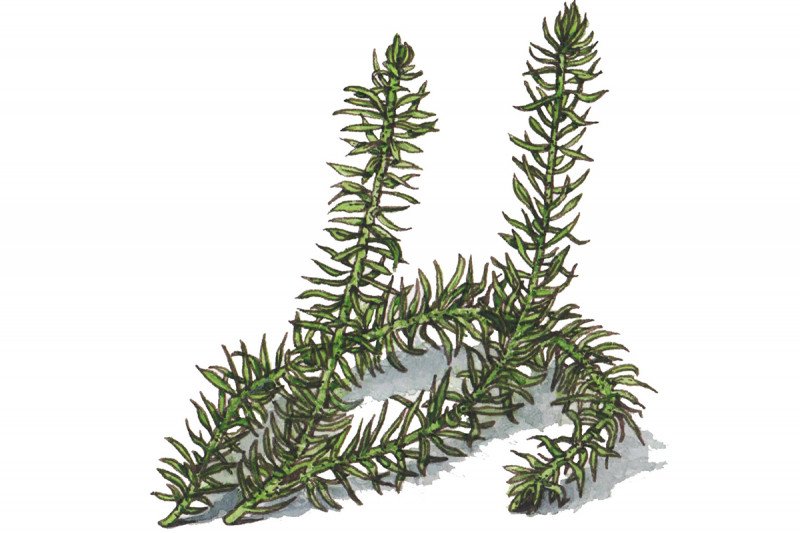
Common Names
- Chinese club moss
- Huperzine; Hup A
- Qian Ceng Ta
- She Zu Cao
- Jin Bu Huan; Shan Zhi
For Patients & Caregivers
Tell your healthcare providers about any dietary supplements you’re taking, such as herbs, vitamins, minerals, and natural or home remedies. This will help them manage your care and keep you safe.
What is it?
Huperzine A may help improve memory, but studies are limited with mixed results.
Huperzine A is extracted from Huperzia serrata, an herb used in Chinese medicine. It is marketed as a dietary supplement to improve brain function. It may help to improve memory by protecting nerve cells and has been used as a treatment for Alzheimer’s disease and vascular dementia in Asia. However, larger well-designed studies are needed.
Although some cancer patients use huperzine to reduce chemotherapy side effects, no clinical studies have been conducted to show it is safe and effective for such use. It may also interact with many drugs and can cause mild adverse effects.
What are the potential uses and benefits?
- To treat cognitive disorders
Studies on whether huperzine may benefit patients with Alzheimer's disease are mixed. It may improve cognition in patients with vascular dementia, but additional studies are needed. - To treat myasthenia gravis
Cases of this neuromuscular disease have been reported as being treated with huperzine. - To relieve neuropathy
Although there are claims of effectiveness against neuropathy, clinical data are lacking.
What are the side effects?
Mild: Nausea, thirst, abdominal pain, anorexia, dizziness, vomiting, constipation, diarrhea, insomnia, excitability, hyperactivity, sweating, slow heart beat, drowsiness, nasal blockage, swelling
What else do I need to know?
Do Not Take if:
- You are taking acetylcholinesterase inhibitor drugs like donepezil, galantamine, or rivastigmine: Huperzine works by the same mechanism and may increase the risk of adverse effects.
- You are taking a dopamine D2 receptor blocker: Huperzine may cause symptoms of Parkinson’s disease.
- You are using calcium channel blockers or beta adrenergic antagonists: Huperzine may lower heart rate.
For Healthcare Professionals
Scientific Name
Clinical Summary
Huperzia serrata, a type of fir moss, is also known as Chinese club moss. It is used as a component in traditional Chinese herbal formulas for blood circulation and to relieve pain. A purified alkaloid extract from this plant known as huperzine A has neuroprotective effects and has been developed as a treatment for Alzheimer’s disease and dementia in Asia (1). In the US, it is available as a dietary supplement to promote cognitive function. It is also used by some cancer patients to relieve pain and neurological dysfunction due to chemotherapy.
Most studies on H. serrata are based on the extract huperzine A, which selectively inhibits acetylcholinesterase (1). Animal studies suggest antiapoptotic, anti-inflammatory, and antioxidative properties may contribute to its protective effects in nerve agent poisoning (2), myasthenia gravis (3), hepatic reperfusion injury (4), and diabetes-associated cognitive decline (5). Clinical studies on huperzine A for Alzheimer’s disease have yielded mixed results (6) (7) (8), but a meta-analysis suggests that it may help mild to moderate cognitive dysfunction (24). One study found it improved cognitive function in vascular dementia patients (9). More well-designed studies are needed to determine safety and effectiveness.
Although a US patent has been filed claiming its use for cancer pain and neuropathy (10), no clinical trials for these indications have been conducted.
Mild adverse effects from huperzine have been reported (7). Because it acts as an acetylcholinesterase inhibitor, it can potentially interact with many drugs including other anticholinergic drugs, dopamine D2 receptor blockers, calcium channel blockers, and beta adrenergic receptor antagonists (11).
Purported Uses and Benefits
- Cognitive disorders
- Myasthenia gravis
- Neuropathy
Mechanism of Action
Huperzine A is an acetylcholinesterase inhibitor, thereby raising acetylcholine levels in the basal ganglia (1). Higher levels of acetylcholine in the central nervous system are believed to be responsible for less severe cognitive impairment in Alzheimer’s disease (1). Additionally, huperzine can interfere with the pathway of beta-amyloid deposition by regulating precursor protein metabolism and impeding associated neurotoxicity (13). Huperzine also inhibits the N-methyl-D-aspartate receptors in the cerebral cortex (14).
Huperzine diminished diabetes-associated cognitive decline in rats by enhancing glycemic control, suppressing inflammation, augmenting brain-derived neurotrophic factor expression, and limiting oxidative stress (5). In a mouse model of hepatic ischemia reperfusion injury, the antioxidative, anti-inflammatory, and antiapoptotic properties of huperzine contributed to hepatoprotective effects (4).
Adverse Reactions
Nausea, anorexia, dizziness, vomiting, constipation, insomnia, excitability, thirst, sweating, bradycardia, abdominal pain, somnolence, hyperactivity, nasal obstruction, diarrhea, and edema (21). Some of these reactions could stem from the anticholinesterase activity of huperzine A.
Herb-Drug Interactions
CYP450 substrates: Lab studies indicate huperzine A induces CYP3A4 by activating pregnane X receptor (22). This may reduce effectiveness of drugs metabolized by this enzyme. Clinical relevance has yet to be determined.
Acetylcholinesterase inhibitors (donepezil, galantamine, rivastigmine): Huperzine A may increase risk of adverse events for other drugs that have acetylcholinesterase inhibition effects.
Dopamine D2 receptor blockers: Taken in conjunction with acetylcholinesterase inhibitors, it may produce a dopamine/acetylcholine imbalance in the striatum, leading to parkinsonian symptoms (11).
Calcium channel blockers: Because acetylcholinesterase inhibitors can produce bradycardia on their own, huperzine A and a calcium channel blocker may produce more severe bradycardia (11).
Beta adrenergic receptor antagonists: Because acetylcholinesterase inhibitors can produce bradycardia on their own, huperzine A and a calcium channel blocker may produce more severe bradycardia (11).